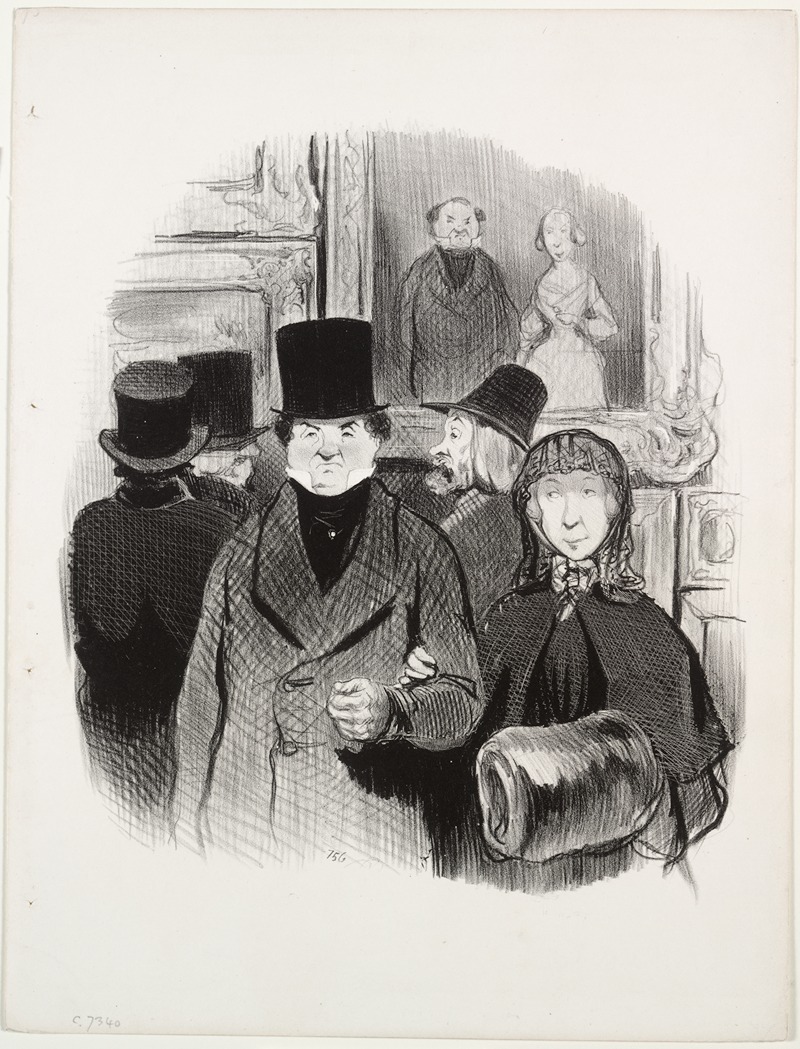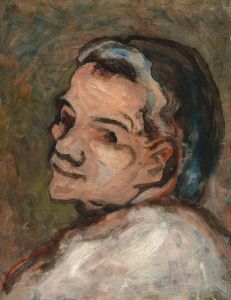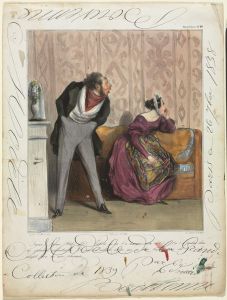
When One’s Portrait is Exhibited at the Salon
A hand-painted replica of Honoré Daumier’s masterpiece When One’s Portrait is Exhibited at the Salon, meticulously crafted by professional artists to capture the true essence of the original. Each piece is created with museum-quality canvas and rare mineral pigments, carefully painted by experienced artists with delicate brushstrokes and rich, layered colors to perfectly recreate the texture of the original artwork. Unlike machine-printed reproductions, this hand-painted version brings the painting to life, infused with the artist’s emotions and skill in every stroke. Whether for personal collection or home decoration, it instantly elevates the artistic atmosphere of any space.
Honoré Daumier's "When One’s Portrait is Exhibited at the Salon" is a notable work by the French artist, who is renowned for his satirical and often humorous depictions of 19th-century French society. Daumier, born in 1808 in Marseille, France, was a prolific artist known for his lithographs, paintings, and sculptures. His work often critiqued the social and political issues of his time, and he is particularly celebrated for his keen observations of human nature and society.
"When One’s Portrait is Exhibited at the Salon" is a part of Daumier's extensive body of work that focuses on the art world and its patrons. The Salon, an official art exhibition of the Académie des Beaux-Arts in Paris, was a significant event in the 19th century, where artists could showcase their work to the public and critics. It was a prestigious venue that could make or break an artist's career. Daumier's piece captures the anxiety and anticipation that artists and their patrons felt when their works were displayed at this influential exhibition.
Daumier's approach to this subject is characteristically satirical. He often used humor to highlight the pretensions and vanities of the art world. In "When One’s Portrait is Exhibited at the Salon," Daumier likely explores the reactions of both the artist and the public to the display of a portrait. His work frequently depicted exaggerated expressions and postures to emphasize the absurdity or vanity of his subjects, a technique that is likely employed in this piece as well.
The medium of the work is not definitively documented, but Daumier was known for his lithographs, a printmaking technique that allowed for the mass production of images. This method was particularly effective for his satirical pieces, as it enabled wide distribution and accessibility to a broader audience. However, Daumier also worked in oil paints and sculpture, so the exact medium of "When One’s Portrait is Exhibited at the Salon" would need to be confirmed by examining the piece itself or reliable sources.
Daumier's works, including this one, are appreciated for their insightful commentary on the human condition and the societal norms of his time. His ability to capture the essence of his subjects with humor and empathy has earned him a lasting place in the history of art. While "When One’s Portrait is Exhibited at the Salon" may not be as widely recognized as some of his other works, it nonetheless contributes to the rich tapestry of Daumier's critique of 19th-century French society and the art world.
Overall, Honoré Daumier remains a significant figure in art history, and his works continue to be studied and admired for their artistic merit and social commentary. His legacy as a keen observer of human nature and a master of satire endures, making his works relevant even today.

















